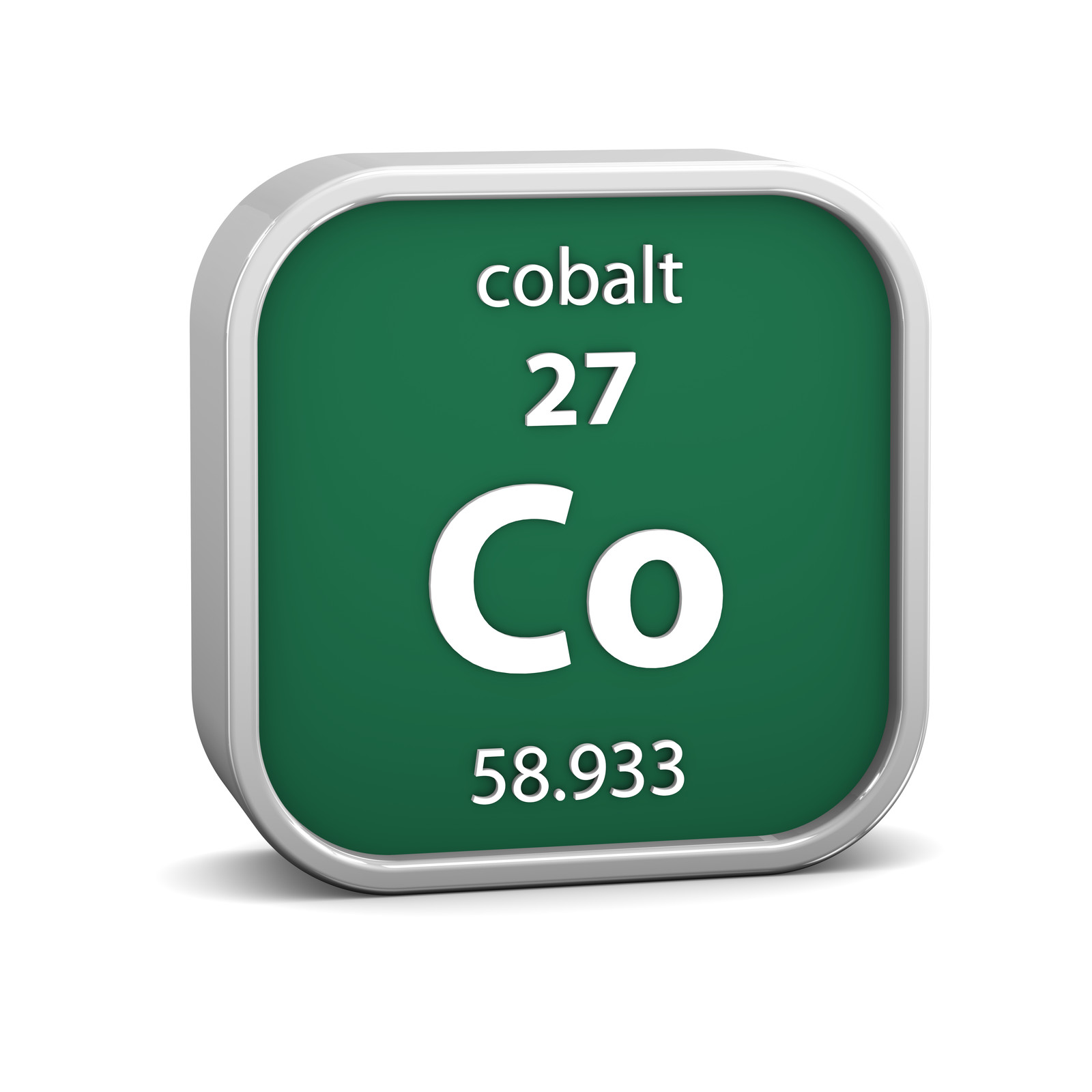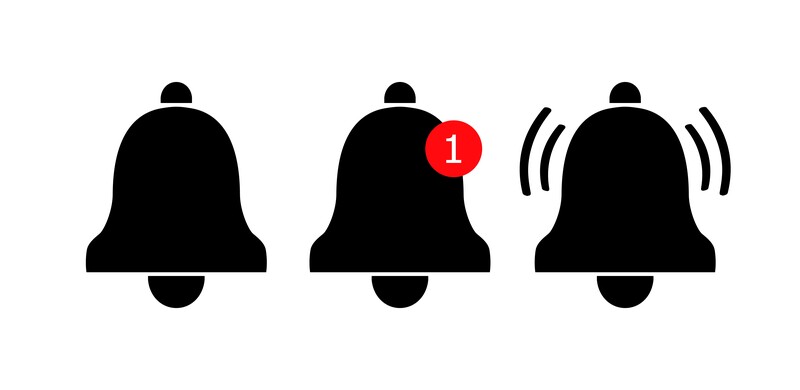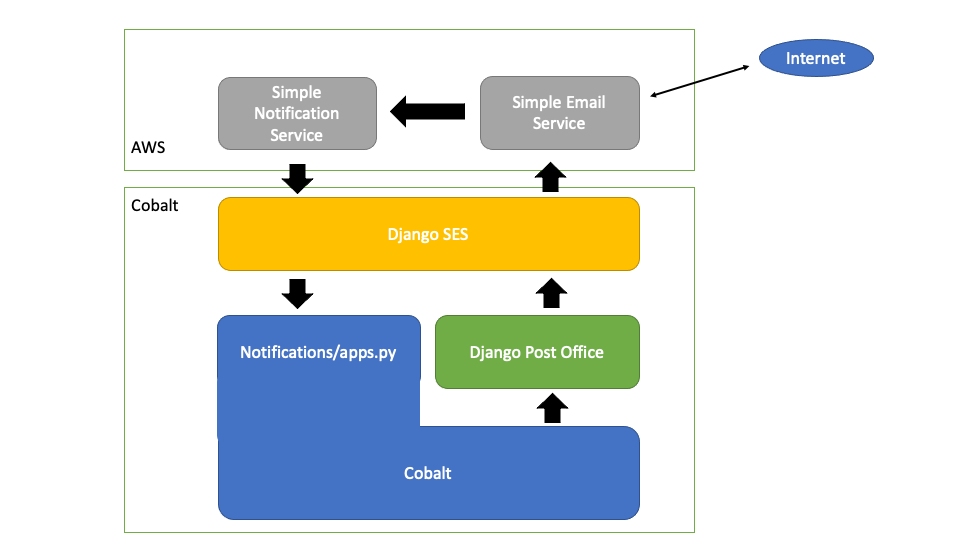

Note
This documentation needs a refresh. The email part needs updated with examples and the rest needs to be tighter.
How To Use The Reference Documents
Notifications Application#
Note
This page has the documentation on how to use this application (externally provided APIs etc). If you are looking for information on how it works internally, you can find that in Notifications Application.
Module Purpose#
Account handles things relating to User accounts such as profiles and settings. There are multiple user types to support the need to deal with users who have not registered for the system as well as real, registered users.
External Usage#
Notifications is the communication centre of Cobalt. It is how all other modules communicate with members and is also a notice board for events (actions, not bridge events) that members may want to subscribe to be notified about.
There are many events that a Cobalt user may wish to be notified about. For example, they may want to hear when a new post is added to a particular forum, or when someone replies to a comment that they have made in a forum. They may wish to be notified when the results become available for an event they have played in, or when a congress in their area is announced.
A user may have different preferences for how they are notified as well. One user may want SMS, another email and yet another may only wish to find out when they visit the website. Of course, some users may not want to be notified at all and others will want a combination of methods depending upon what it is they are being notified about.
Notification Types#
There are five broad categories of notification:
- System Broadcasts (Not yet implemented)
Users will receive these regardless of preference. These are rare.
- Broadcasts (Not yet implemented)
These are typically emails from the National Body, Clubs, State Bodies etc. Users may opt out of these through their settings.
- Named Specific (Not yet implemented)
The calling module will provide a list of names. Users can choose how they are notified or choose to opt out. For example, Results tells Notifications that the results for an event are available and who played in the event. Notifications passes this information on to the member (or not, if the member opts out).
- Happenings
These are things that members choose to listen to. For example, a new Forum post.
- Personal
These are messages intended for a single recipient.
Notification Methods#
In App Notifications - these are always provided. The user will see this when they log in to Cobalt.
Email - HTML format emails.
SMS - Short messages, often with links to pages within Cobalt.
User Experience#
Users always see notifications on the top right hand of the screen. They can acknowledge a notification by clicking on them. Notifications should come with a link that takes the user to the right relative URL for more information.
In addition to the In App Notification, users can also receive notifications over email or SMS.
Creating Immediate Notifications#
You can create a notification for a user directly by calling
notifications.views.contact_member(). You need to provide the member,
message and type (SMS or Email) as a minimum.
This is the recommended way of communicating with a member if you want standard notifications as this will also create an internal notification message.
If you don’t want the internal notification then you can call the sending functions directly.
notifications.views.send_cobalt_email()- sends an email.notifications.views.send_cobalt_sms()- sends an sms.
It is recommended that you do this rather than sending messages directly so we can have a single point to maintain.
Creating User Listens#
Sometimes you don’t want to immediately notify a user but you do want to set them up for later notifications. For example, if a user posts an article in a Forum, they may want to be notified when someone comments on it.
In this case you should call notifications.views.create_user_notification().
This will set up a rule to listen for the events that you request. If you no
longer want this (for example, if the post is deleted), then you should call
notifications.views.delete_user_notification().
Event Types#
The applications control their own event types, but the format of the string used to identify them should follow a standard:
<application>.<function>.<action>
If necessary more levels can be added.
For example:
forums.post.comment.new - a comment has been added to a post
forums.post.delete - a post has been deleted
Notification of Events#
When something has happened in an application that a user could be interested in, then notifications should be informed. It is better to over communicate than to under communicate, but always expect to also have to update the code within notifications as it isn’t magic.
To announce an event has occurred call
notifications.views.notify_happening().
This is the point at which if a member has registered to find out about an event, then they will be notified.
Email#
Email is a core function of Cobalt. We use email as our main method of communication. Django can send emails through SMTP to any compliant email gateway. The Django email backend is also swappable.
We use two packages to help us with this:
Django Post-Office (https://pypi.org/project/django-post-office/) installs as a replacement email backend and handles secure delivery and bulk emails. It actually uses any other email backend to do the sending so you can use this without relying on AWS SES.
Django SES (django-ses/django-ses) is a replacement email backend that tightly integrates with SES. You can send emails using SES simply through SMTP but Django SES can also receive status updates.

When Cobalt sends an email it goes through Django Post Office which actually uses Django SES to do the sending. Django Post Office handles templates and queuing as well as general orchestration of emails. Django SES uses BOTO3 rather than SMTP which is more efficient.
After that AWS SES is responsible for sending the email. SES notifies Simple Notification Service (SNS) when a message changes state and that in turn notifies us through Django SES.
Django SES emits signals for the events that it receives which we pick up through apps.py.
See notifications.apps.NotificationsConfig().
This updates the Snooper model: notifications.models.Snooper() which has a one-to-one
relationship with the Django Post Office Email object.
Use Cases#
The following things are email use cases:
Send an email that is already formatted
Send an email using a Django Post Office template
Send a single email to a single person
Send a single email to multiple people (Using BCC)
Send a similar email to multiple people (Using context. e.g. ‘name”: etc)
Send an email by putting it on a queue to send shortly
Send an email immediately
Allow only Global email admins to see the email
Allow specific RBAC groups to see the email (e.g. Club admins for a specific club)
Provide a reply_to field so that users can reply
In addition to sending the email, you may also wish to add a user notification to the screen
Behaviours#
Some emails can be generated by Django itself, but all emails that we create have the following properties:
Every email has a Django Post Office email record and a Snooper record
Every email has a “playpen” check to only send to a real email address from the production system
By default emails are queued for sending but this can be overridden
By default emails can only be viewed by Global email admins but this can also be overridden
Functions#
- create_rbac_batch_id
This is optional, but if you want anyone other than admins to be able to see the emails that you send then you need to provide an RBAC batch id with the email request. This function will create one for you.
- cobalt_send_email
This is the general use email sender.
